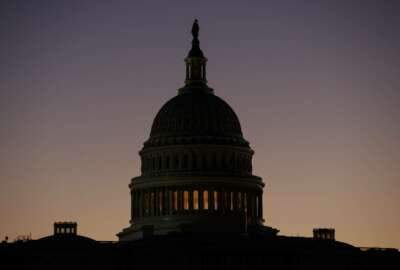
Feds’ pay lags 22.5% behind private sector, the Federal Salary Council reports
New council recommendations would adjust several pay locality areas, but must get approval from the president's pay agent before implementation.
Salaries for federal employees fall significantly behind the private sector, the Federal Salary Council reported today.
The council reported the pay disparity between public and private sector employees, on average, was 22.47%. In late 2020, the council calculated the pay gap at 23.11%. The pay disparity is calculated based on wages only, and doesn’t include the value of benefits for the public and private sectors.
The report came after some discussions on Capitol Hill over the federal pay raise for 2023. The White House’s request was a 4.6% across-the-board raise, which Democrat lawmakers in both the House and the Senate have supported.
With the new data from the council, unions such as the National Treasury Employees Union advocated for a higher 5.1% across-the-board pay raise, a percentage that House Democrats have also pushed for through the FAIR Act.
“The council is well aware of the difficulties that federal agencies face competing for workers who frequently find higher salaries in the private sector, which is why this pay gap is a valuable piece of information for our elected officials to consider when setting salaries for the federal workforce,” NTEU National President Tony Reardon, a member of the Federal Salary Council, said in an Aug. 5 press statement.
The council also adopted recommendations from a working group to add and adjust several pay locality areas for federal employees working across the country.
The Federal Salary Council is tasked with providing pay adjustment recommendations for federal workers based on local conditions. Currently, there are 53 locality pay areas, plus a “Rest of U.S.” category, which has shrunk over time.
The council’s working group, which includes the National Treasury Employees Union, the American Federation of Government Employees, the National Federation of Federal Employees and representatives of the Federal Salary Council, previously unveiled recommendations to alter how pay is calculated for some feds.
The council recommended adding Fresno, California, and Spokane, Washington, as new locality pay areas for federal employees. If implemented, the new pay localities would impact approximately 11,400 employees in the General Schedule who work in those areas.
Additionally, the working group recommended adding new pay locality areas for Reno, Nevada, and Rochester, New York, impacting roughly 4,800 GS employees in those cities. The pay gaps in those two locations exceed the minimum 10% threshold required to establish a new pay locality. Reno is at 16.79% and Rochester is at 17.70%, AFGE wrote in an Aug. 5 press release.
To adjust some peripheral locations to surrounding higher paying areas, the working group also recommended adding:
- Emporia, Virginia, and Greensville County, Virginia, to the Richmond, Virginia, locality
- Dukes and Nantucket counties in Massachusetts to the Boston locality
- Huron County, Michigan, to the Detroit locality
- Pacific and San Juan counties in Washington to the Seattle locality
“These recommendations would put additional money into the hands of federal employees whose pay lags behind their coworkers,” AFGE National President Everett Kelley said in a press statement.
To support additional employee recruitment, relocation and retention efforts, the working group said agencies have some discretionary authority to provide additional compensation and benefits. Agencies with significant recruitment and retention issues should consider using human resource flexibilities from the Office of Personnel Management, the report stated.
The recommendations also included updating the criteria for establishing and defining new pay localities, which would move about 15,400 GS employees into higher pay localities, AFGE wrote. It would also remove the requirement for there to be a minimum of 2,500 GS employees in an area to establish a new locality.
The council’s recommendations now go to the president’s pay agent, composed of Labor Department Secretary Marty Walsh, Office of Management and Budget Director Shalanda Young and OPM Director Kiran Ahuja. The pay agent must approve the recommendations before anything goes into effect.
Copyright © 2025 Federal News Network. All rights reserved. This website is not intended for users located within the European Economic Area.
Drew Friedman is a workforce, pay and benefits reporter for Federal News Network.
Follow @dfriedmanWFED





